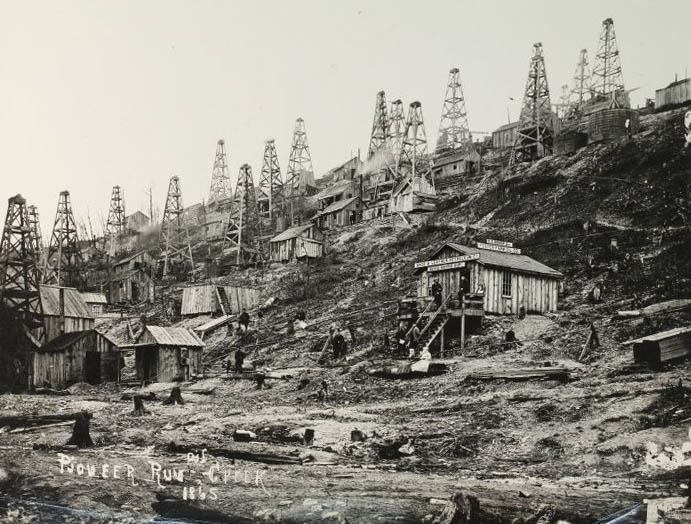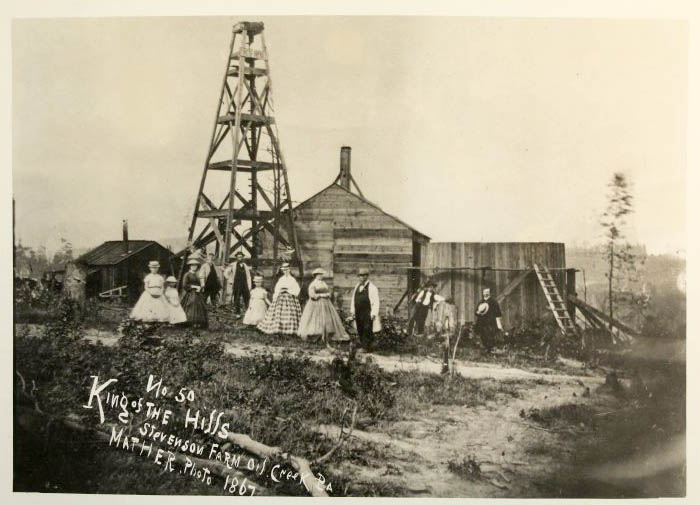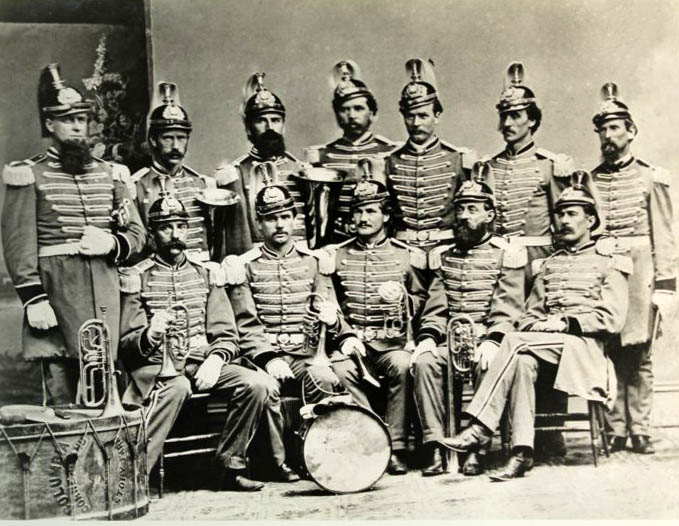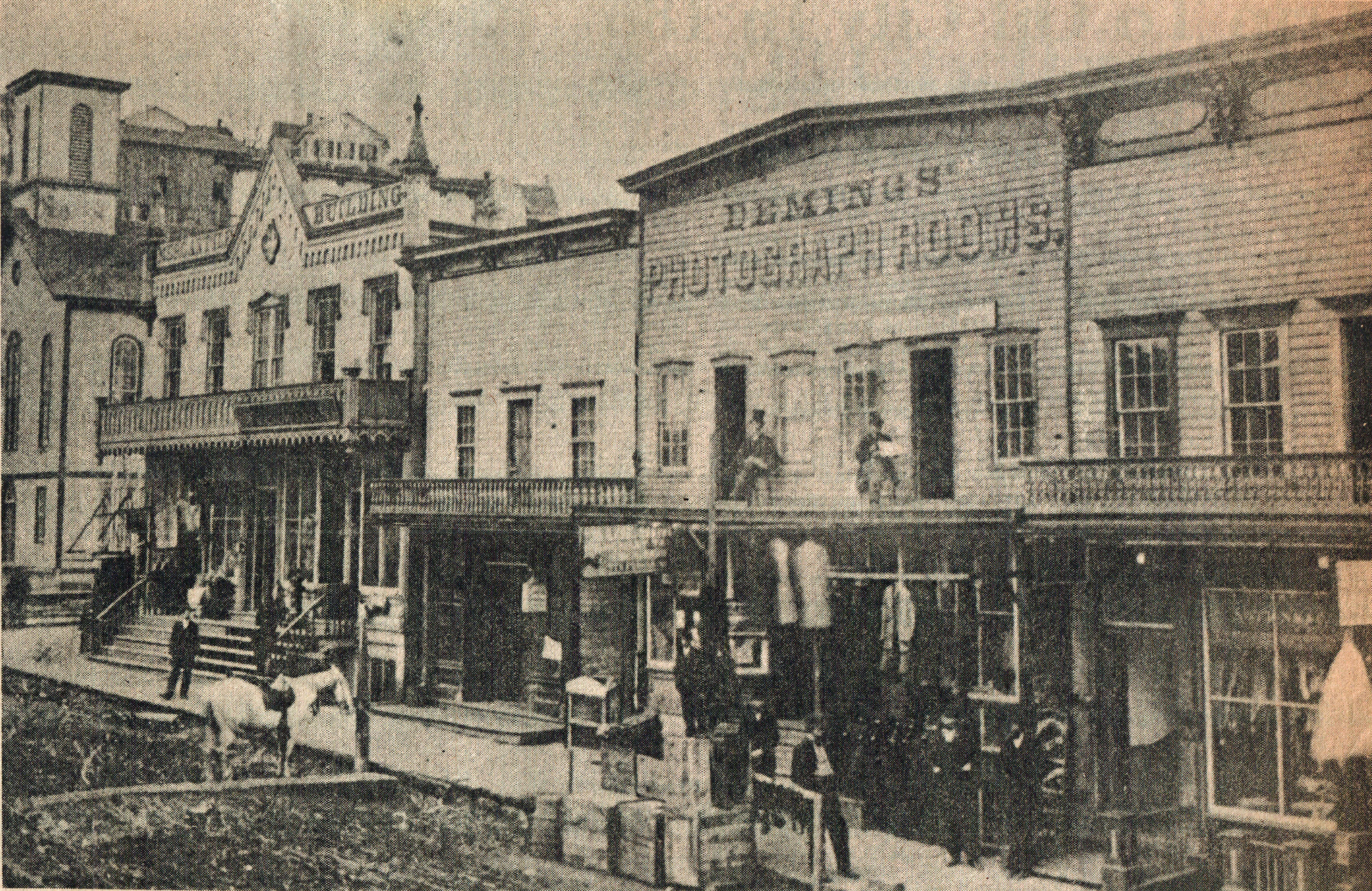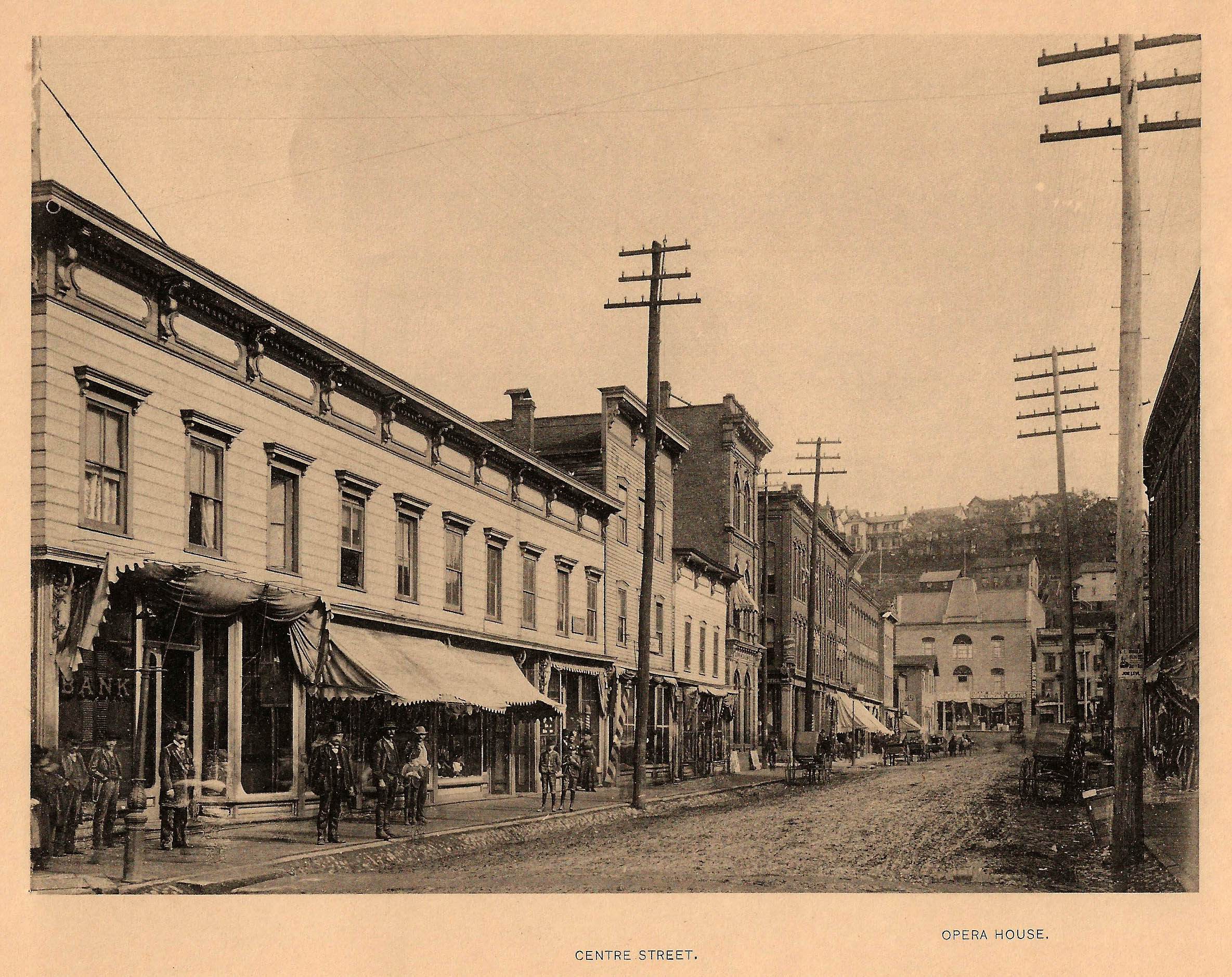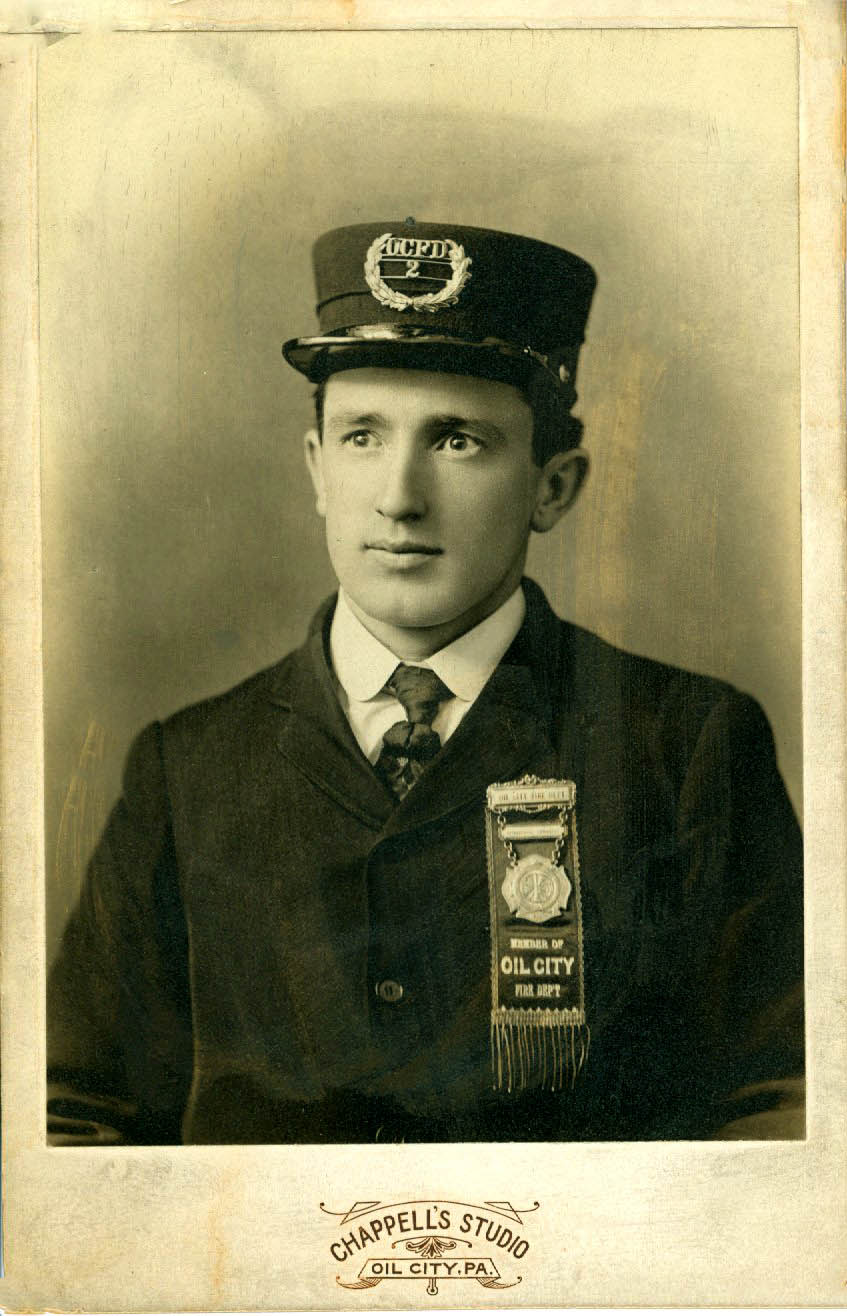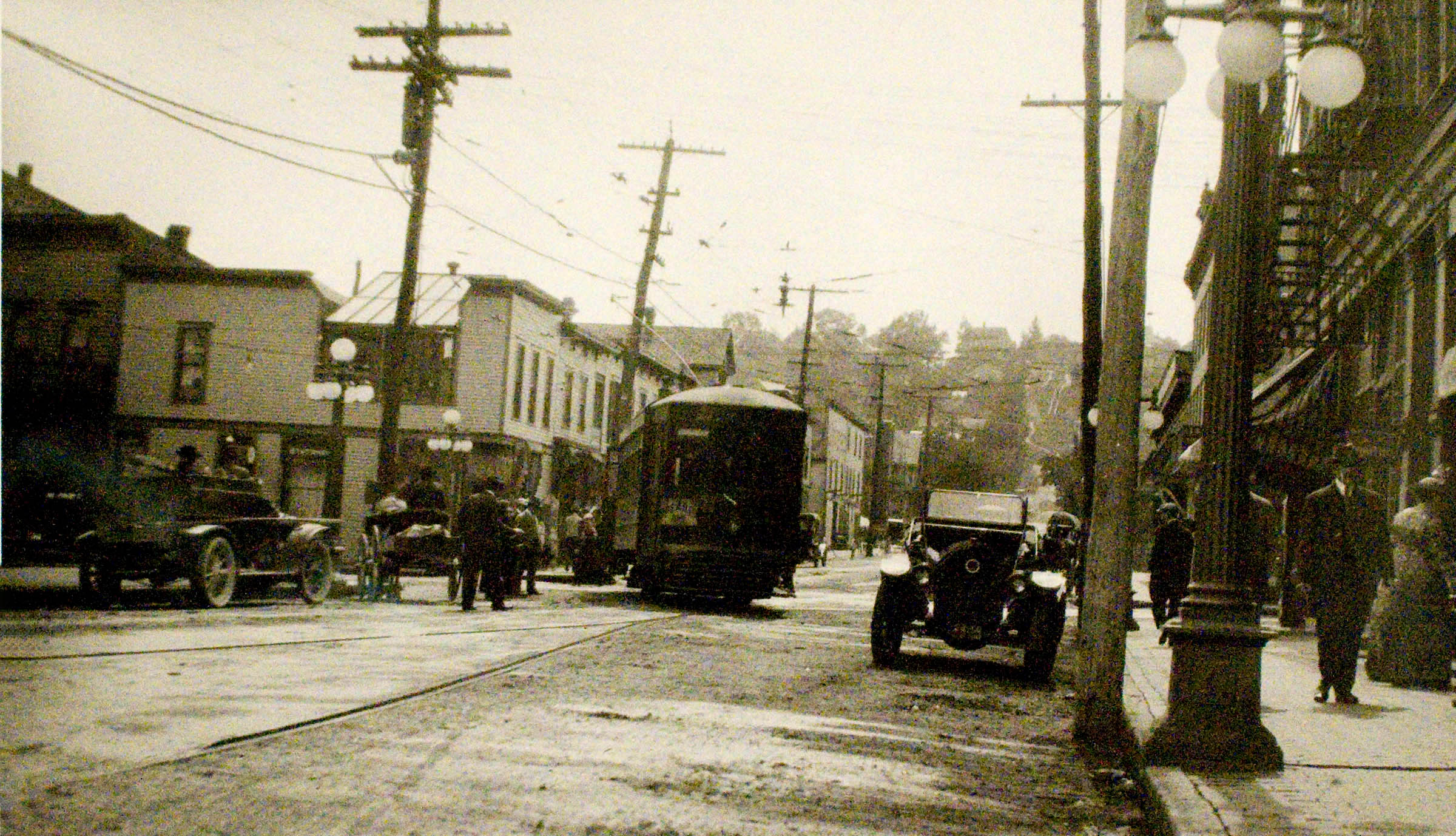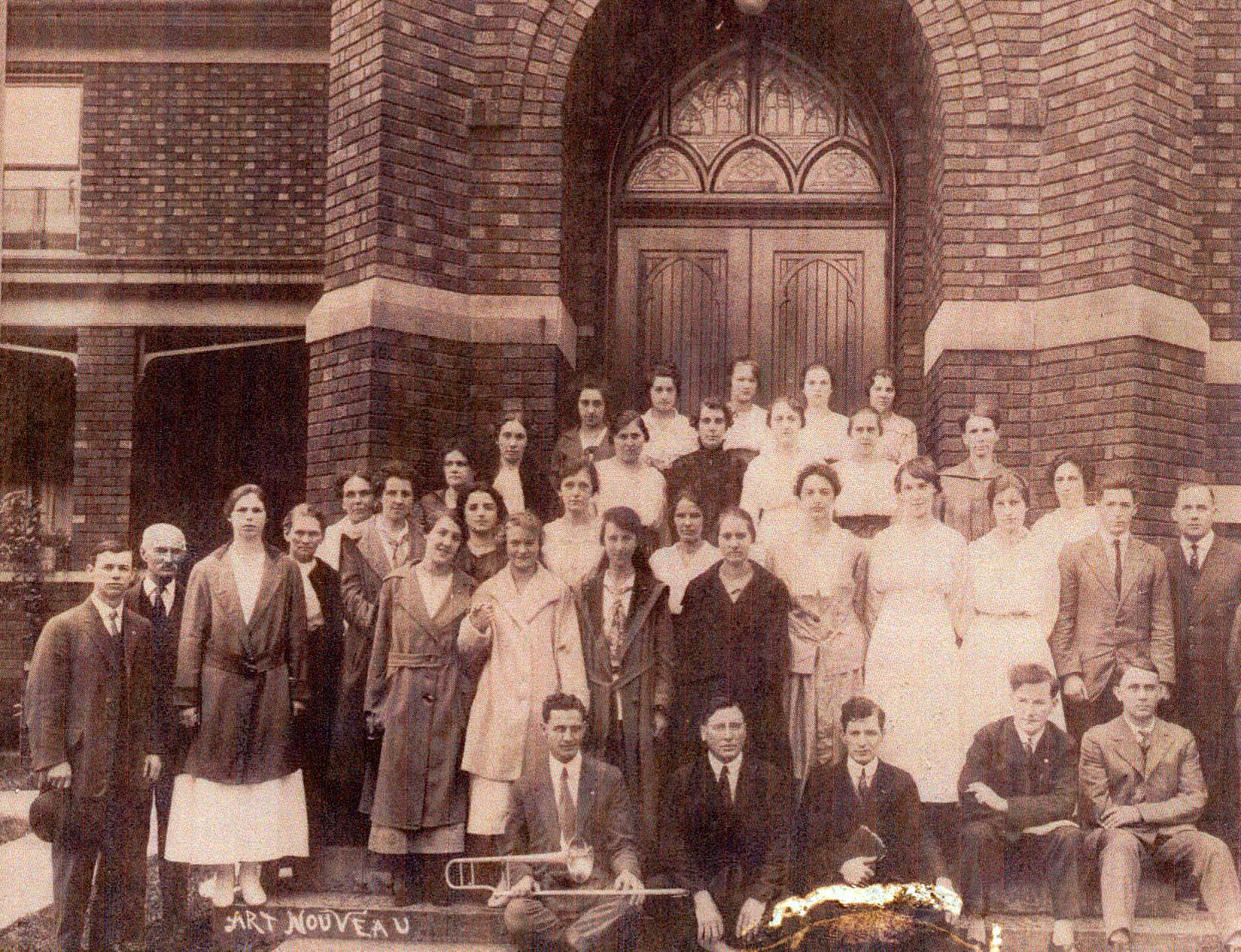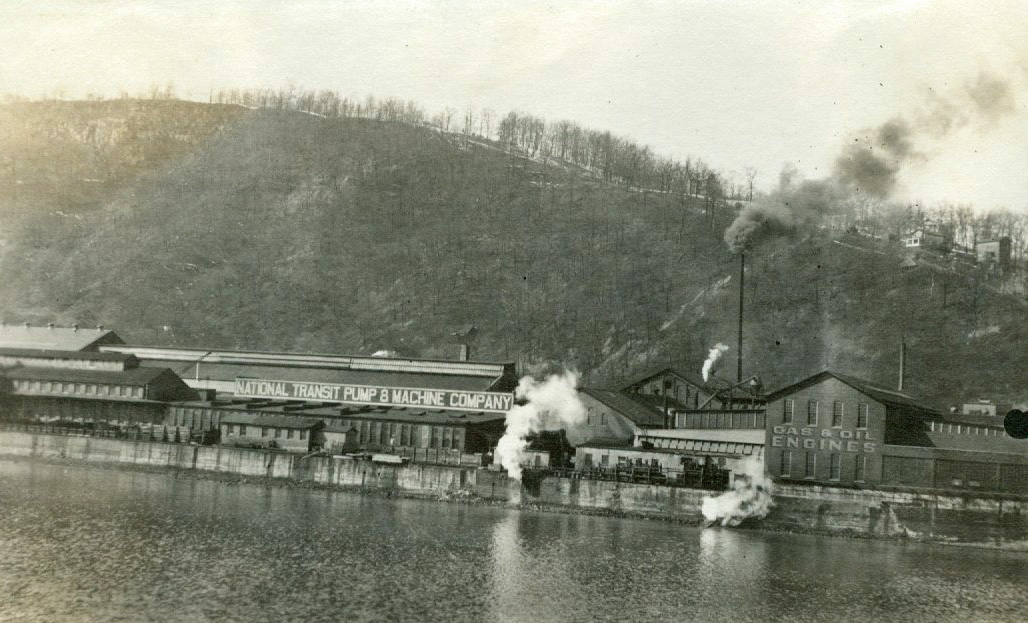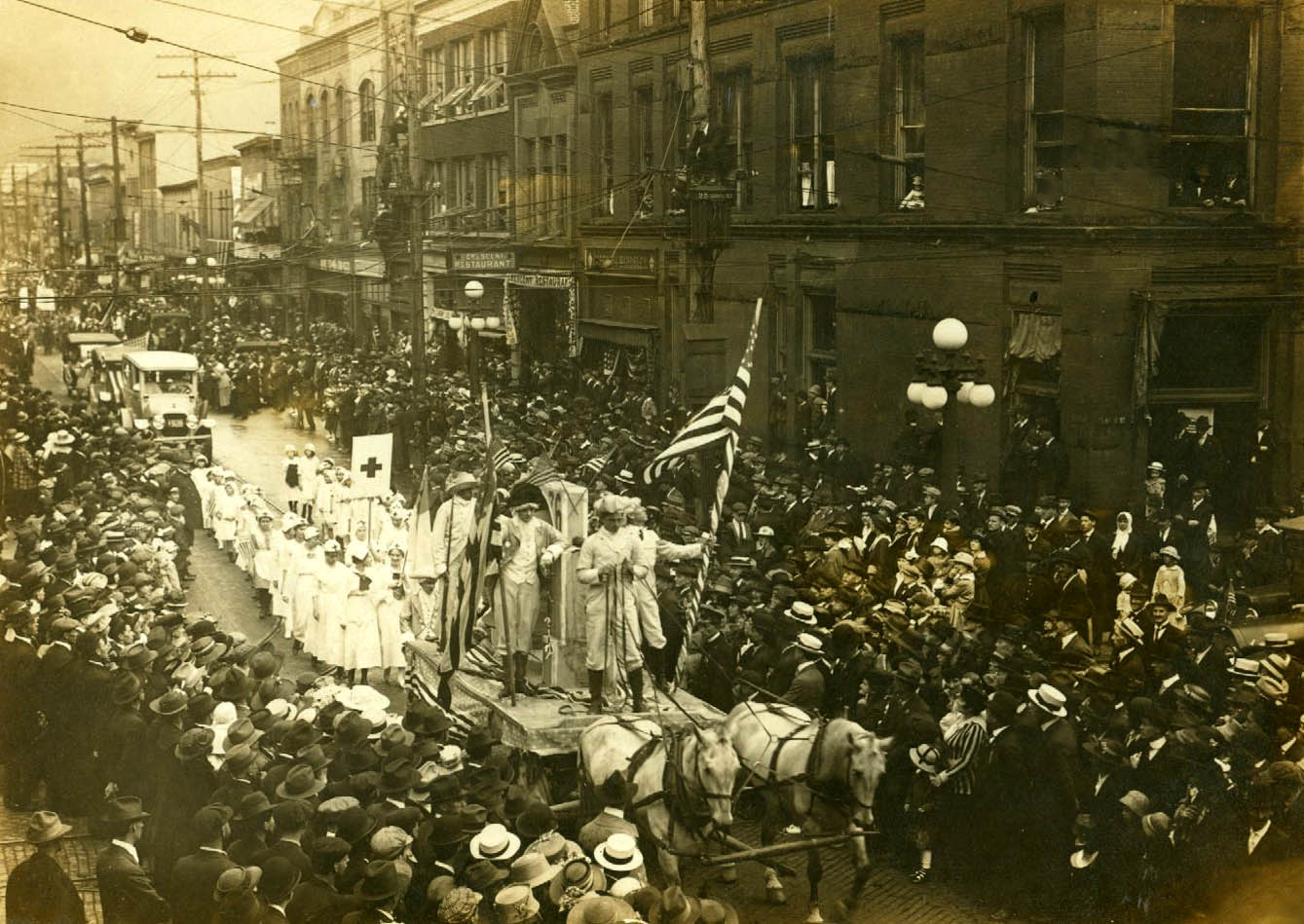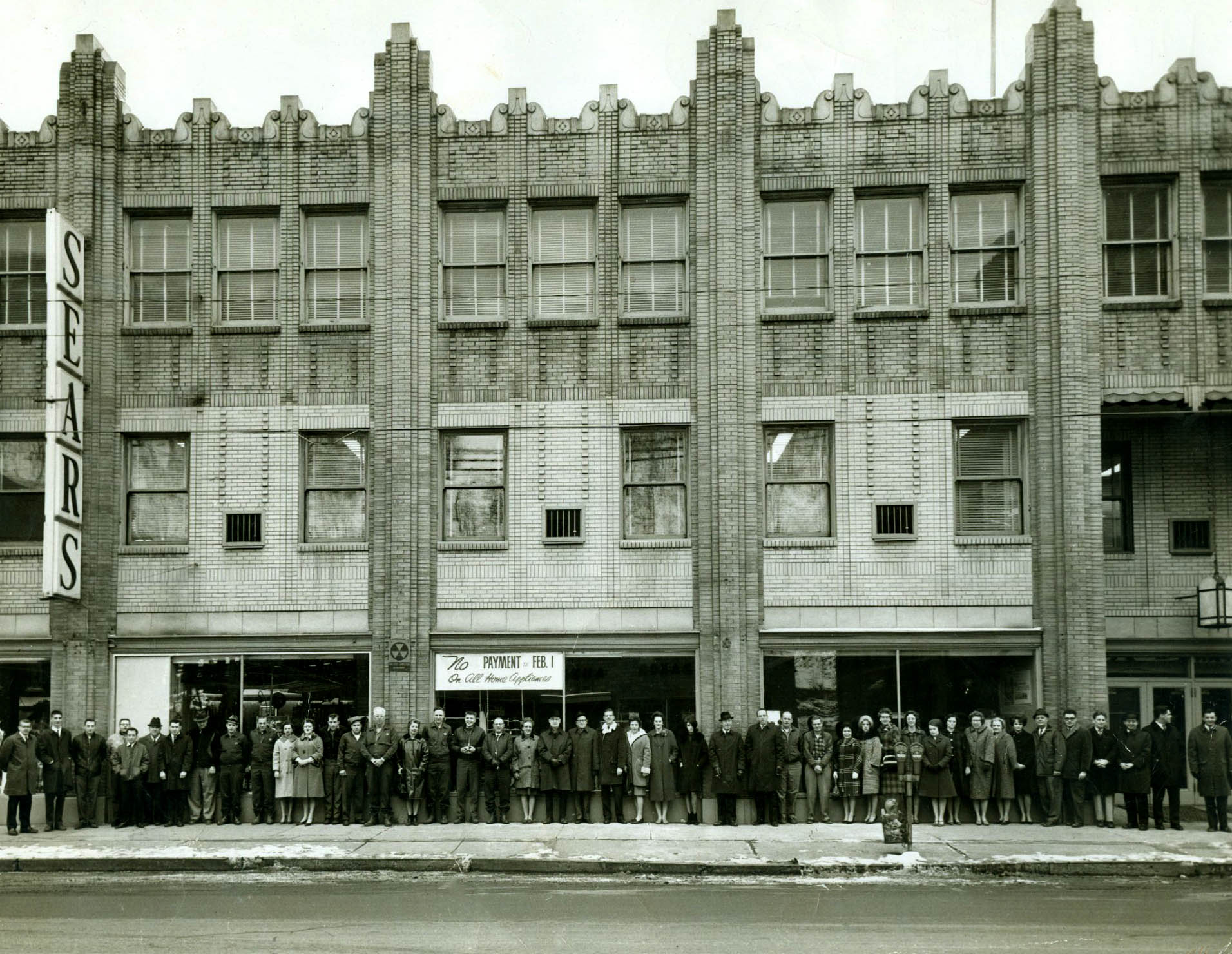Say Cheese
- Judy Etzel
- October 28, 2022
- Hidden Heritage
- 7701
The Oil Valley was awash with investors, speculators, shopkeepers, teamsters, drillers, producers and an array of others keen on making their fortunes in the roaring oil boom of the 1860s.
The rush of men, women and families to the western Pennsylvania oil fields drew another profession to the region – photographers. The camera-wielding men found their talents were in great demand to record how the industry fared, who made lots of money, which wells were successful, how oil-related companies prospered and more.
Oil City was a key location for the photographers who numbered in the dozens from about 1860 through the 1940s.
By the mid-1960s, the city could boast only three professional photography studios – the Mae Lewis Studio on State Street, Petulla’s Studio on Main Street and Gill’s Studio on Seneca Street.
Of all the photographers, one would claim the greatest fame – John A. Mather (1829-1915). Born in England, Mather immigrated with his family to the U.S. and, after trying his hand at different occupations, settled on photography as his vocation of choice.
His 1915 obituary noted he was “one of the most interesting subjects in the history of the Pennsylvania oil developments” and was considered “one of the very best artists in the United States.”
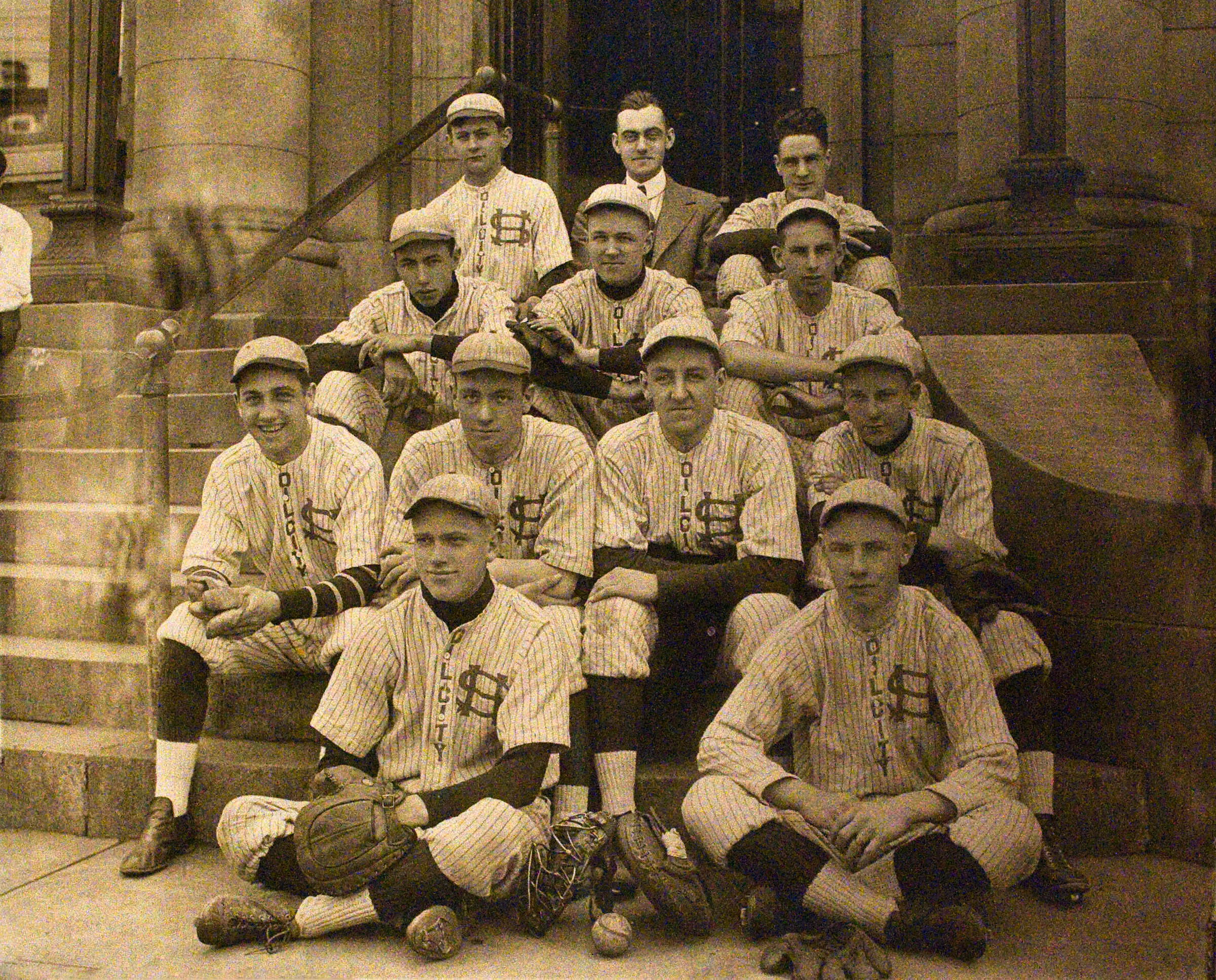
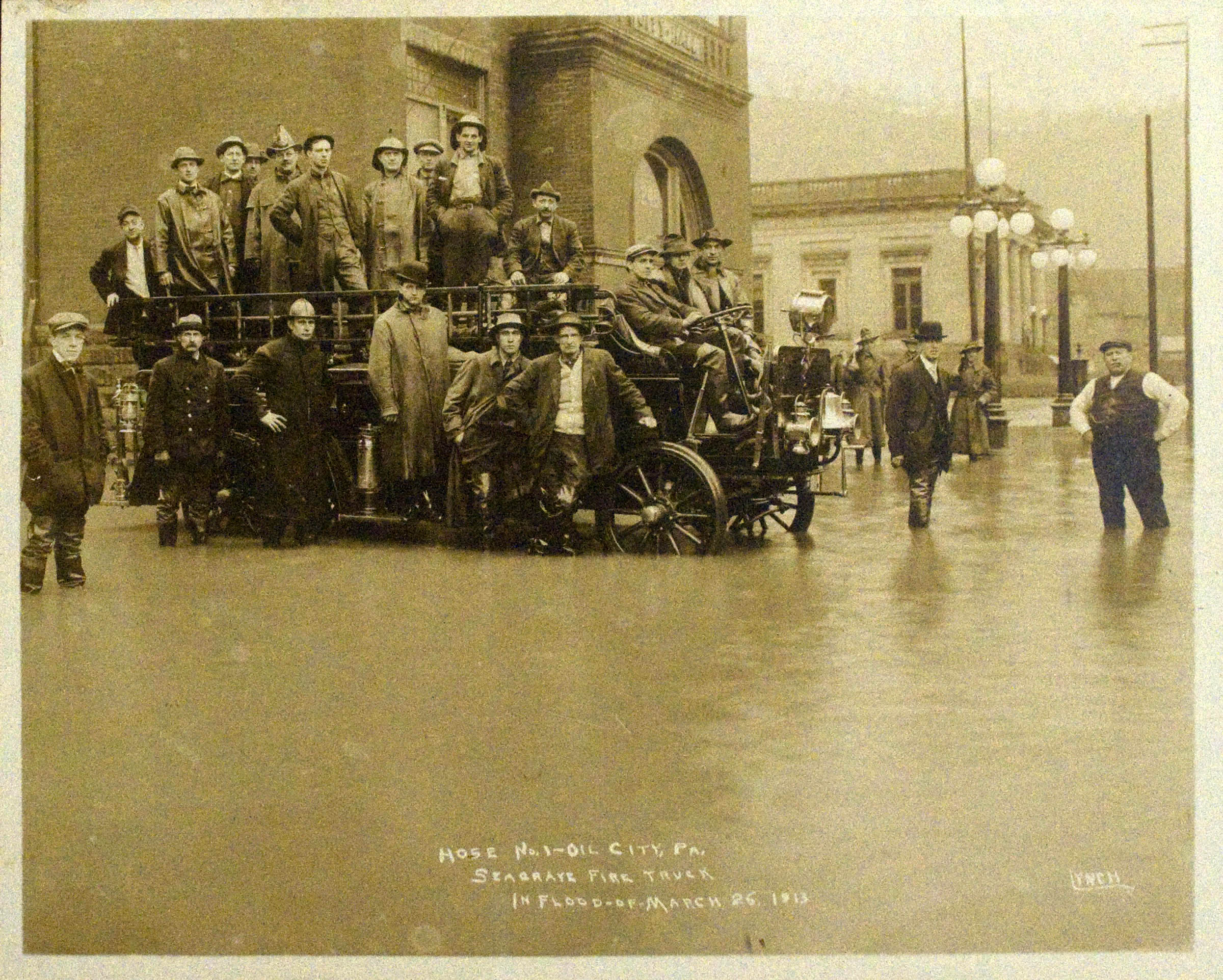
There were several other photographers who plied their trade up and down the oil valley and claimed fame as artists in portraits and landscapes. Studios were located throughout the city in office buildings as well as private living rooms.
In the baby boomer years, three photography studios catered to local businesses, industrial plants, families and high school yearbooks. The 1960s listing of photographers shows the Gill Studio and Camera Shop at 293 Seneca Street, the Mae Lewis Studio at 6 State Street, and the Petulla Studio at 1 Main Street.
John A. Mather
Mather was a papermaker in England until 1856 when he immigrated to the U.S. and began working at a papermill near Harrisburg where his brother was plant superintendent. A national economic panic the following year depleted Mather’s bank account and he became an itinerant photographer.
In 1860, drawn like so many others to the roiling western Pennsylvania oilfields after Drake’s successful well, Mather traveled by horse and stagecoach to Titusville where he set up shop in a small photography studio atop a wagon.
Calling himself the “Oil Creek Artist,” Mather believed the oil boom had historical significance, according to his lengthy obituary in 1915.
“Mr. Mather was one of the most interesting subjects in the history of the Pennsylvania oil developments,” noted the write-up. “He recorded all aspects of this early Eldorado of petroleum.”
Mather took photographs of oil men, machinery, oil fields and more with much of his attention paid to the Oil Creek Valley. For a time, he shared space in a traveling shop with a watchmaker.
He then added a flatboat with a photographer’s studio in a small shed installed on the deck. The photographer traveled up and down Oil Creek to record history. When the boat would reach the confluence with the Allegheny River at Oil City, he used horses to tow the barge back upstream.
Mather lost out on an opportunity to become a very rich “oil prince.”
It happened this way. J.D. Sherman was drilling what would become a spectacular oil well on Foster Farm near Rouseville in 1861 when his horse died unexpectedly. He ventured into Mather’s studio in Titusville and asked the owner if he knew of a horse to buy. He told Mather he had no money but would pay for the beast by offering one/sixteenth interest in his pending oil well.
Just at that time, noted Mather’s obituary, a woman walked into the shop to have her photograph taken. Mather turned his attention to the customer and Sherman walked outside to mingle with people on the street.
Spying a man on a horse, Sherman made the same purchase offer that he had with Mather. The man accepted and Sherman left with his new horse.
Sherman’s well was extremely successful and the horse-seller, described only by his nickname of “Massachusetts Chase,” earned $75,000 as his part of the profit from the Sherman Well.
“This was, without a doubt, the largest sum of money ever realized from the actual sale of an ordinary horse in the history of such transactions. … It probably was the appearance of that one woman, in search of a picture of herself, that prevented Mr. Mather from becoming one of the oil princes of those early days,” noted his August 1915 obituary.
Alvin D. Deming
The early oil scenes were also recorded by Alvin Drake Deming. Born in 1837, he traveled as a young man to western Pennsylvania and settled in Rouseville where he opened a photography studio. Deming specialized in stereograph pictures and lithographs. His work sold well and was featured in numerous publications in the U.S. and Europe. He also was an investor in the oil business and owned oil wells with his brother Newell Deming.
In 1871, Deming moved to Oil City where he opened a leather business. Staying active in the oil excitement, he became a partner in 1883 in the Independent Refining Co.
Frank Robbins
At age 24, Frank Robbins opened a studio in Titusville and eventually moved it to Oil City in 1880. His office was located at Center and Sycamore Streets. His photographs showcased Oil City homes and businesses. Robbins published a booklet called “Oil City Illustrated” that contained 1890s pictures of downtown scenes.
He relocated to Bradford in 1900 but continued to take photographs throughout the Oil Region. Robbins’ stereoscope pictures included scenes in Pithole, Titusville, Oil City and surrounding areas. His collection is numbered in the hundreds.
Paschal Sanzari
In the early 1900s, Paschal Sanzari immigrated from Italy and worked various jobs in the oil fields and in the local communities where he was a motorman on the streetcar line. News-Herald newspaper editor Carolee Michener wrote that Sanzari, who had a keen interest in photography, enlisted in the service in World War I and took military pictures at various U.S. bases. Returning to Oil City after the war, Sanzari, who married the former Grace Voorhies, rejoined Citizens Traction Co. and was the motorman for runs to Monarch Park. He used his photography skills to record scenes along the streetcar line and at the public park.
Louis B. Chappell
Born in 1862 in New York, Louis Chappell came to Oil City in 1897 and opened a photography studio and picture frame shop at 209 Center Street. According to a write-up in the 1896 souvenir edition of the Derrick, “His studio is handsomely fitted up with all the latest devices and appliances known to art, while its furnishings for the comfort of patrons are most elaborate”. The Chappell profile notes, “He ranks with the foremost photographers of the time. … That he is a natural born artist is plainly evidenced by the high class of work he turns out and the large patronage he enjoys.”
Chappell eventually had four assistants and branch studios in Emlenton and Edenburg. He married the former Emma A. Weller of Emlenton in 1892. They moved to Texas in 1920.
August E. Nelson
Born in 1872 in Sweden, August E. Nelson came to the U.S. as a small boy. In 1919, he purchased the Art Noveau Studio on State Street where he operated a thriving photography business. Nelson took the photographs for the first Oil City High School yearbook in 1921 and continued to be the school photographer for another 20 years. He and his wife, the former Augusta S. Pearson, and their five children lived at 401 E. Third Street.
In 1941, Nelson sold the studio to Donald Nossett and became a moulder for the National Transit Pump and Machine. He also had a small photo-finishing shop in his home. Nossett operated the Art Nouveau Studio until 1955. The E. Bissell Avenue resident became a well-known local photographer.
DID YOU KNOW?
In November 1914, the National Transit Pump and Machine Co. in Oil City announced it had received two large contracts to build big pumps for use at the Panama Canal. The four pumps would be used at the pumping stations on the Atlantic and Pacific ends of the canal. Their purpose was to pump oil to and from all ships awaiting passage through the canal and all oil tanks on shore.
Harry Gruber
Born in 1887 in Oil City, Harry Gruber’s parents were considered “pioneer residents” in the area. He worked as a photographer for several years, operating out of a studio in the Levi Block, and later became associated with the Wolverine-Empire Refining Co. He was named superintendent of the company’s service stations in Oil City and his office was headquartered at the company’s new station at E. Second and State streets.
In his earlier years, Gruber was widely known as an amateur singer and entertainer. He also claimed fame as the nephew of the late Rattlesnake Pete Gruber, described in Harry Gruber’s obituary as “famous far and wide for his skill as a healer,” of Oil City and Rochester, NY.
J.W. Sires
Born in 1833 in Clarion County, Sires moved to Venango County where he worked at Fuller’s Gallery in Franklin. In 1862, he went to work for the U.S. government as a photographer charged with taking pictures of Union fortifications around Washington, D.C. He worked at that same task one winter in the Army of the Potomac.
Returning to Oil City in 1865, he opened a photography studio in downtown Oil City with the last site listed as 116 E. First Street.
Sires, who was in business for 47 years, specialized in porcelain pictures, watercolor portraits and landscape art. Notable subjects were Horse Creek, Panther Run and President.
He was skilled in “reproducing interior scenes by flash light,” noted an advertisement. Sires often displayed his portraits of prominent citizens in downtown store and office windows.
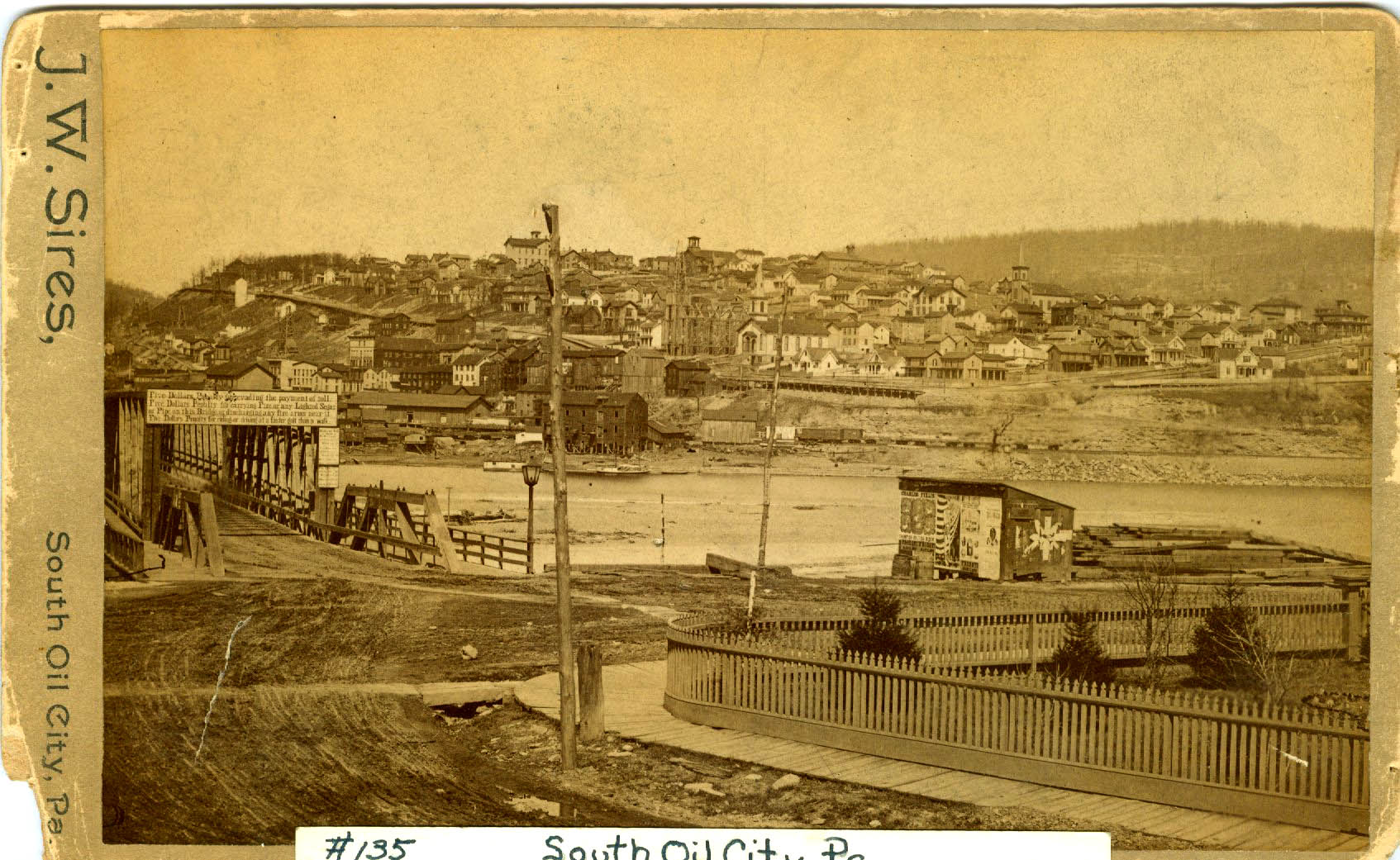
Frank J. Gill
At the age of two years, Frank Gill came to the U.S. with his family from Poland and settled in Oil City. After studying photography, he opened the Gill-Grafinger Studio at 11 E. First Street.
Several years later, he went into business for himself and set up a studio on Seneca Street. In 1954, he switched his studio to 293 Seneca Street where he and his wife operated the business until retiring in 1975.
Gill was well-known for his wedding photography throughout the region.
Samuel J. Petulla
Born in Italy, Samuel Petulla Sr. came to the U.S. as a boy.
After serving in the Army in World War I, he attended business schools in Oil City and Erie and graduated from the Illinois School of Photography.
His first studio in 1925 was located in the Connors Block in Oil City. He relocated to Center Street and, in 1961, moved it to 1 Main Street. Petulla was in the photography business for 40 years and was eventually joined by his son.
He and his wife, the former Antoinette Grill, had six children. Petulla was active in civic affairs and served as president of the Oil City Eagles.
Written by Judy Etzel with research by Kay Dawson and design by Natalie Cubbon.
HIDDEN HERITAGE IS SPONSORED BY:
Jack Eckert & Susan Hahn
— In Memory of Kay Ensle —
Support This Project
Donations to the library are appreciated to help offset printing costs & make this project possible! Want to become a sponsor? Email us at promotions@oilregionlibraries.org to get started!
Make a Donation
